The Necromancer
[D&D Core Class]
The Necromancer
Necromancers are the arcane masters of death magic and undeath. Often evil, sinister mages, their power over life rivals that of death priests.
Necromancers are almost exclusively human.

Necromancer Prestige Classes: lord of flies, nethermancer, pale night, seromancer, voodoo queen.
Adaptation: The necromancer is a more flavorful alternative to the standard wizard specialist, designed as a gothic, sinister villain.
Game Rule Information
Necromancers (Ncr) have the following game statistics.
Abilities: Intelligence is of primary importance to necromancers, as it dictates their power as spellcasters. Charisma also plays an important role in their ability to command undead and, if the necromancer adopts the Gravetouched feat, dictates their spellcasting ability instead of their Intelligence.
Base Attack Bonus: Poor (as a wizard).
Hit Die: d4.
Saves: Good Will / Poor Fortitude and Reflex.
Class Skills: The necromancer's class skills are Bluff (Cha), Concentration (Con), Craft (Int), Intimidate (Cha), Knowledge (Arcana) (Int), Knowledge (Religion) (Int), Knowledge (The Planes) (Int), Profession (Wis), and Spellcraft (Int). Skill Points at Each Level: 2 + Intelligence modifier (x4 at 1st level).
Alignment: Any nongood
Starting Age: As a wizard.
Starting Gold: 3d4 x 10gp.
Favored Class: Necromancer is favored class for half-elves and humans.
Class Features
All of the following are class features of the necromancer.
Weapons and Armor Proficiency: Necromancers are proficient with all simple weapons and with the scythe. They are not proficient with any type of armor or with shields.
Dark Price
The path of necromancy is a costly, corrupting one. The necromancer must pay one of the following Dark Prices when he steps on this blackest of roads:
Necromantic Focus
His focus on necromancy almost at the exclusion of all other forms of magic is not without its benefits. The necromancer receives the Spell Focus (Necromancy) feat for free.
Spellcasting
The necromancer casts arcane spells as a wizard, using his Intelligence score to determine maximum spell level, Difficulty Class, and bonus spells. In addition, he can cast one additional Spell Per Day. All spells must be learned from the following list:
Unliving Minion [2nd level]
The necromancer gains an undead familiar. He can transform the corpse of an animal from the familiar list into an undead familiar, as if he utilized the Undead Familiar feat. This is supernatural.
Command Undead [3rd level]
His influence over undead nearly rivals that of the death priests. The necromancer can rebuke and command undead as an evil cleric two levels lower. Command Undead stacks with a neutral or evil cleric's Rebuke Undead ability. This is supernatural.
Necromantic Feat [4th/8th/12th/16th/20th level]
The necromancer is a master of death, undeath, and corruption. At the indicated levels, he selects one of the following feats as a bonus feat: Coldhearted, Craft Phylactery, Death Touch, Descriptor Focus (Death, Evil, Fear, or Positive), Empower Turning, Extra Turning, Fearless, Frightening, Greater Spell Focus (Necromancy), Heighten Turning, Intrepid, Necrology, Night Eyes, Poison Proficiency, Quicken Turning, Spell Mastery, or White Necromancy. The necromancer must otherwise qualify for any feat selected.
Deathly [20th level]
The necromancer becomes not unlike the undead. He can now use objects and cast spells normally reserved for undead, and non-Intelligent undead now consider him one of their own and ignore his presence unless provoked. In addition, the necromancer is now immune to level drain and death from massive damage.
Epic Necromancer: The epic-level necromancer continues his Hit Die, skill point, Command Undead, and Unliving Minion progressions. In addition, he receives bonus epic feats at 24th level and every four levels thereafter (24th, 28th, 32nd, etc.).
Originally Posted: On the old Wizards of the Coast message boards in late 2003.
Necromancers are the arcane masters of death magic and undeath. Often evil, sinister mages, their power over life rivals that of death priests.
Necromancers are almost exclusively human.

Necromancer Prestige Classes: lord of flies, nethermancer, pale night, seromancer, voodoo queen.
Adaptation: The necromancer is a more flavorful alternative to the standard wizard specialist, designed as a gothic, sinister villain.
Game Rule Information
Necromancers (Ncr) have the following game statistics.
Abilities: Intelligence is of primary importance to necromancers, as it dictates their power as spellcasters. Charisma also plays an important role in their ability to command undead and, if the necromancer adopts the Gravetouched feat, dictates their spellcasting ability instead of their Intelligence.
Base Attack Bonus: Poor (as a wizard).
Hit Die: d4.
Saves: Good Will / Poor Fortitude and Reflex.
Class Skills: The necromancer's class skills are Bluff (Cha), Concentration (Con), Craft (Int), Intimidate (Cha), Knowledge (Arcana) (Int), Knowledge (Religion) (Int), Knowledge (The Planes) (Int), Profession (Wis), and Spellcraft (Int). Skill Points at Each Level: 2 + Intelligence modifier (x4 at 1st level).
Alignment: Any nongood
Starting Age: As a wizard.
Starting Gold: 3d4 x 10gp.
Favored Class: Necromancer is favored class for half-elves and humans.
Class Features
All of the following are class features of the necromancer.
Weapons and Armor Proficiency: Necromancers are proficient with all simple weapons and with the scythe. They are not proficient with any type of armor or with shields.
- Dark Price, Necromantic Focus, Spellcasting
- Unliving Minion
- Command Undead
- Necromantic Feat
- Necromantic Feat
- Necromantic Feat
- Necromantic Feat
- Deathly, Necromantic Feat
Dark Price
The path of necromancy is a costly, corrupting one. The necromancer must pay one of the following Dark Prices when he steps on this blackest of roads:
- Decrepit: The necromancer ages at an accelerated rate. His age immediately jumps 10% at 1st level. Each additional time he attains a level necromancer that grants him access to a new spell level, his age increases by another 10%.
- Pact: He is schooled in necromancy by a more powerful patron being, such as a lich, fiend, or evil dragon – but at a price. Before being allowed access to spells of a higher spell level, the necromancer must strike a bargain with his patron, such as agreeing to perform some evil deed or making some bloody sacrifice. The nature and difficulty of the bargain depends upon both the disposition of the patron and the capability of the necromancer. If he fails to complete the given bargain, he suffers a –10% penalty to all earned experience points, which stacks with any multiclassing penalties, until he attains another level of necromancer that grants access to a higher spell level and can strike and succeed at fulfilling a second bargain
- Pale: He is a creature of the night. The necromancer suffers penalties when exposed to bright light as if he were a drow. Drow necromancers or other necromancers already sensitive to light cannot pay this particular Dark Price.
- Unholy: He is an abomination to the divine. The necromancer is vulnerable to holy water, the splash of which inflicts 2d4 points of acid damage. In addition, Healing spells cast by nonevil divine spellcasters have no effect on the necromancer, and inflict spells cast upon the necromancer by good divine spellcasters always inflict the maximum possible damage.
- Withered: He is a withered in some fundamental way, whether physically or morally. He suffers a –2 penalty either to Constitution or to both Charisma and Wisdom.
- Pact: He is schooled in necromancy by a more powerful patron being, such as a lich, fiend, or evil dragon – but at a price. Before being allowed access to spells of a higher spell level, the necromancer must strike a bargain with his patron, such as agreeing to perform some evil deed or making some bloody sacrifice. The nature and difficulty of the bargain depends upon both the disposition of the patron and the capability of the necromancer. If he fails to complete the given bargain, he suffers a –10% penalty to all earned experience points, which stacks with any multiclassing penalties, until he attains another level of necromancer that grants access to a higher spell level and can strike and succeed at fulfilling a second bargain
Necromantic Focus
His focus on necromancy almost at the exclusion of all other forms of magic is not without its benefits. The necromancer receives the Spell Focus (Necromancy) feat for free.
Spellcasting
The necromancer casts arcane spells as a wizard, using his Intelligence score to determine maximum spell level, Difficulty Class, and bonus spells. In addition, he can cast one additional Spell Per Day. All spells must be learned from the following list:
- 0 Level: arcane mark, daze, detect magic, detect poison, disrupt undead, ghost sound, gothic, inflict minor wounds, lullaby, message, read magic, resistance, touch of fatigue
- 1st Level: animate corpse, bane, cause fear, chill touch, command, command undead, corrupt weapon, curse water, deathwatch, detect undead, doom, endure elements, fury eyes, hide from undead, hypnotism, inflict light wounds, lesser confusion, obscuring mist, pale steed, protection from evil, protection from good, ray of enfeeblement, remove fear, sleep, summon insect I
- 2nd Level: blindness/deafness, darkness, darkvision, death knell, desecrate, doubt, false life, fog cloud, freezeblood, gentle repose, ghoul touch, hold animal, hold person, inflict minor wounds: mass, inflict moderate wounds, jellyfish's endurance, Morosa's sorrowful sobbing, mouse's strength, remove paralysis, scare, shriek, spectral hand, spider climb, status, summon insect II, summon swarm, touch of idiocy, turtle's grace, web, whispering wind
- 3rd Level: animate dead, bestow curse, contagion, deep slumber, deeper darkness, delay poison, diminish plants, dispel magic, dominate animal, gaseous form, halt undead, inflict serious wounds, jinx, magic circle against evil, magic circle against good, martyr's touch, nondetection, poison, ray of exhaustion, restoration: lesser, speak with dead, stinking cloud, summon insect III, vampiric touch
- 4th Level: age, antiplant shell, blight, bloodcurdling scream, confusion, crushing despair, death ward, discern lies, energize, enervation, Evard's black tentacles, fear, giant vermin, immature, inflict critical wounds, locate creature, minor necromancy [Gravetouched only], Morosa's woeful wake, phantasmal killer, remove curse, rusting grasp, scrying, solid fog, summon insect IV, wither, wizen
- 5th Level: circle of doom, cloudkill, colorless aura, command: greater, destroy undead, disrupting weapon, dominate person, feeblemind, Golgamoth's gruesome inversion, hold monster, inflict light wounds: mass, insect plague, magic jar, mind fog, Morosa's black carriage, nightmare, permanency, planar binding: lesser, slay living, summon insect V, symbol of pain, symbol of sleep, timefreeze, unhallow, waves of fatigue
- 6th Level: analyze dweomer, antilife shell, bedevil, circle of death, colorless touch, control undead, create undead, damage undone, disintegrate, dispel magic: greater, eyebite, flesh to stone, forbiddance, Illiquin's amorphia, Illiquin's dysmorphia, jinx: greater, planar binding, power word: deafen, restoration, senescence, shadow walk, stone to flesh, summon insect VI, symbol of fear, undeath to death, visage of horror, waves of destruction
- 7th Level: blasphemy, colorless spray, creeping doom, demonwrack, destruction, finger of death, harm, hold person: mass, inflict serious wounds: mass, insanity, major necromancy [Gravetouched only], necromorphosis, personal stasis, power word: blind, primitivity, sleep of ages, summon insect VII, symbol of stunning, symbol of weakness, utter hopelessness, waves of exhaustion
- 8th Level: arrow of slaying, binding, clone, colorless wall, create greater undead, demand, horrid wilting, Illiquin's xenomorphia, inflict critical wounds: mass, march of time, planar binding: greater, power word: stun, summon insect VIII, symbol of death, symbol of insanity, temporal stasis, trap the soul, unholy aura, youth and beauty
- 9th Level: astral projection, colorless sphere, dominate monster, energy drain, energy gain, grand necromancy [Gravetouched only], harm: mass, hold monster: mass, Nikadema's timely repose, power word: kill, raise dead, restoration: greater, soul bind, summon insect IX, timefreeze: mass, wail of the banshee, weird
- 1st Level: animate corpse, bane, cause fear, chill touch, command, command undead, corrupt weapon, curse water, deathwatch, detect undead, doom, endure elements, fury eyes, hide from undead, hypnotism, inflict light wounds, lesser confusion, obscuring mist, pale steed, protection from evil, protection from good, ray of enfeeblement, remove fear, sleep, summon insect I
Unliving Minion [2nd level]
The necromancer gains an undead familiar. He can transform the corpse of an animal from the familiar list into an undead familiar, as if he utilized the Undead Familiar feat. This is supernatural.
Command Undead [3rd level]
His influence over undead nearly rivals that of the death priests. The necromancer can rebuke and command undead as an evil cleric two levels lower. Command Undead stacks with a neutral or evil cleric's Rebuke Undead ability. This is supernatural.
Necromantic Feat [4th/8th/12th/16th/20th level]
The necromancer is a master of death, undeath, and corruption. At the indicated levels, he selects one of the following feats as a bonus feat: Coldhearted, Craft Phylactery, Death Touch, Descriptor Focus (Death, Evil, Fear, or Positive), Empower Turning, Extra Turning, Fearless, Frightening, Greater Spell Focus (Necromancy), Heighten Turning, Intrepid, Necrology, Night Eyes, Poison Proficiency, Quicken Turning, Spell Mastery, or White Necromancy. The necromancer must otherwise qualify for any feat selected.
Deathly [20th level]
The necromancer becomes not unlike the undead. He can now use objects and cast spells normally reserved for undead, and non-Intelligent undead now consider him one of their own and ignore his presence unless provoked. In addition, the necromancer is now immune to level drain and death from massive damage.
Epic Necromancer: The epic-level necromancer continues his Hit Die, skill point, Command Undead, and Unliving Minion progressions. In addition, he receives bonus epic feats at 24th level and every four levels thereafter (24th, 28th, 32nd, etc.).
Originally Posted: On the old Wizards of the Coast message boards in late 2003.







 what the Great Conjunction is. 'What's the Great Conjunction?'
what the Great Conjunction is. 'What's the Great Conjunction?' 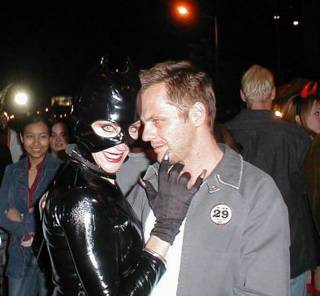
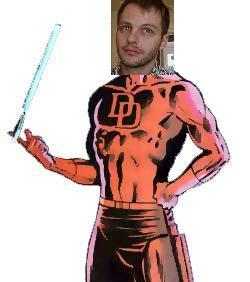



 A Is for Androids
A Is for Androids B Is for Boba
B Is for Boba C Is for Calvin
C Is for Calvin D Is for Dragons
D Is for Dragons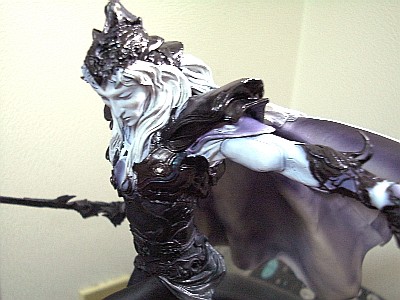 E Is for Elric
E Is for Elric F Is for Futures
F Is for Futures G Is for Genie
G Is for Genie H Is for Hobbits
H Is for Hobbits I Is for Iceman
I Is for Iceman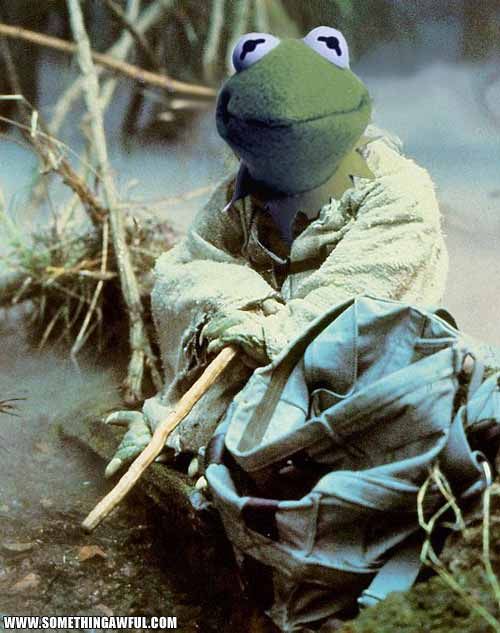 J Is for Jedi
J Is for Jedi K Is for Kraken
K Is for Kraken





















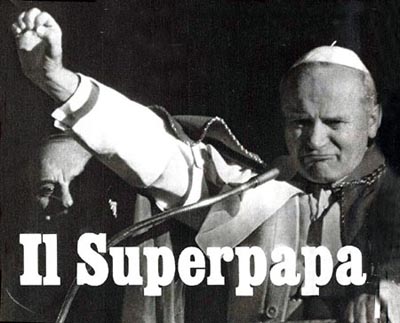














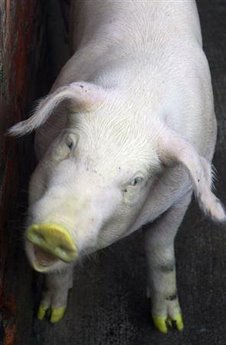




























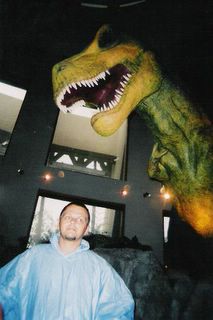



0 Comments:
Post a Comment
<< Home